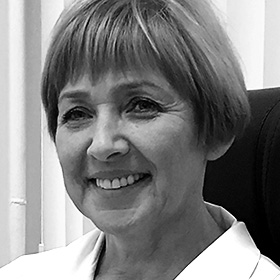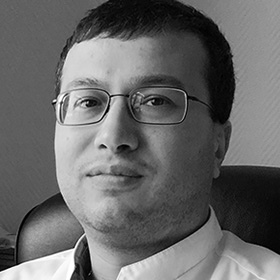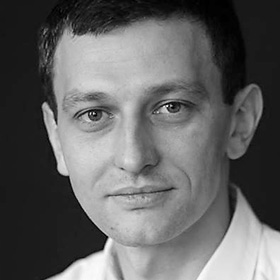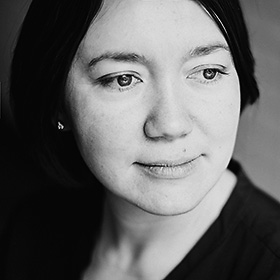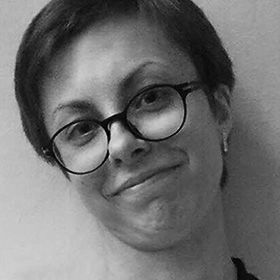Learn to live with Duchenne muscular dystrophy
Most likely, you will know more about Duchenne muscular dystrophy than the doctors with whom you will have to communicate, and hardly any of them are familiar with the specifics of the daily life of a person with this disease. Therefore, your experience is extremely important, and you need to have information about your son's health condition and what he needs for his life. Feel free to tell your doctors about your experience.
Perhaps there is a pediatrician in your clinic who is ready to learn more about this rare disease and can solve some of the medical problems on the spot. Your local pediatrician must be familiar with the patient's Passport.
The doctor will monitor the child and prescribe supportive therapy. But it is important to understand that therapy is not just medicine: you need to follow a regime of activity and rest, perform physical exercises (stretching). It is difficult to follow these requirements without understanding their causes, especially when it is not evident that the child has any problems. But one of your goals is to help your son keep his ability to walk for as long as possible, so everything described below should become a part of your daily routine.
30% of boys with Duchenne muscular dystrophy may have delayed speech development, behavioral characteristics, and emotional manifestations. In the future, this may affect school education. Try as soon as possible to find specialists with whom your boy can overcome these problems.
You will need to have benefits and additional opportunities (for example, an additional day off at school) to purchase medications and technical rehabilitation equipment, to be examined and treated in medical institutions, to receive assistance on preferential terms. A registered disability status can significantly help with the solution of these issues.
You may also need legal support to protect your child's rights. And of course, you will need social support and psychological assistance: communicate with other parents, it is easier to be together.
In the global practice, there are standards of therapy for patients with Duchenne muscular dystrophy, which directly affect the quality and duration of life. They are improving as medical science develops, but there are basic things that need to be paid attention to by those who are close to the patient: family members, nannies, teachers. We talk about these things. Learn to live with Duchenne muscular dystrophy.
Medicated hormone therapy
Glucocorticosteroids (Prednisolone or Deflazacort) reduce muscle breakdown and help to prolong the ability to walk, hand function and respiratory musculature function, also they reduce the risk of scoliosis, cardiomyopathy.
Glucocorticosteroids can be prescribed only by a doctor. Only doctors can determine the dosage and medication regimen. Cancellation of drugs and interruptions in hormone therapy without consulting a doctor can be hazardous to health.
More often, hormone therapy is prescribed at the age of 3-4 years. Before you start receiving hormone therapy pay attention to the appetite: how many times a day the child eats, what the size of the portion is, what food he prefers. If he is overweight, consult a nutritionist.
Boys with Duchenne muscular dystrophy can have psychological characteristics, but at the same time hormone therapy can affect their behavior. To understand what is a side effect of the treatment and what is a characteristic of the child, take notice of it. If necessary, ask a psychologist.
Consult with your dentist and ENT-specialist: tooth decay, adenoid hypertrophy, etc. can be the centers of a chronic infection that can aggravate during the hormonal therapy.
If before starting hormone therapy the child didn’t have chickenpox, it is worth getting vaccinated against the herpes virus type 6 — the vaccine is «live» and «live» vaccines cannot be used for vaccination after the therapy starts. During the hormone therapy this infantile infection can run bad and cause serious complications; that’s why this vaccination is included in the foreign recommendations.
Possible side effects of hormone therapy are: overweight, low stature, low immunity, changes in behavior (anxiety, capricious nature, and emotional lability), high blood pressure, stomach-ache, gastritis, and osteoporosis. Behavioral problems eventually disappear. It is believed that Deflazacort has fewer side effects than Prednisolone. Side effects can be adjusted by changing the dosage regimen of the hormonal drugs.
read all
Medicated heart therapy
Monitoring ECG, ultrasound of the heart and a cardiologist should be held at least 1 time per year. Possible cardiac problems of DMD are: a violation of a heart rate, increased blood pressure, cardiomyopathy.
Cardiac drugs are prescribed before complaints are appeared. In some cases, the cardiologist recommends the use of ACE inhibitors for the prevention of cardiomyopathy. Diuretics and beta-blockers may also be assigned for the prevention of heart failure.
You should better have a stethoscope and a mechanical tonometer with a kids cuff at home. Once you visit a cardiologist it is necessary to show the results of recent research to him. If you have a complaint, it is better to keep a diary of blood pressure and heart rate control within 3-5 days and then show it to the doctor.
It is important to remember that girls and women who are carriers of the mutation may have some violations of the heart. It is necessary for them to monitor the ECG and ultrasound of the heart, especially in adolescence, during pregnancy, after their forties or when complaints (syncope, palpitations, poor exercise tolerance, pain in the heart, and others.).
Other drugs
Basic nutritional supplements: Q10, L-Carnitine, green tea extract, omega-3 acids, etc. Vitamin D and calcium are prescribed to prevent osteoporosis.
Drugs with unproven efficacy: amino acids, antioxidants, dietary supplements, nootropics and cardiovascular drugs, when injected intramuscularly can damage the muscles. Anabolic Steroids (Oxandrolone, etc.) and Botulinum toxin A are contraindicated.
ARVI, diseases of the respiratory system
Once the child begins to attend kindergarten, school, or any other community, he gets sick more often, and this is a common situation. In most cases, it does not require special ARVI therapy. For children with Duchenne muscular dystrophy without respiratory disorders, prescription of antibiotics is not required. Frequent ARVI is not a sign of immunodeficiency and does not require prescription of immunomodulators. The impact of immunomodulators and immunostimulants for patients with Duchenne dystrophy while receiving glucocorticoids was not investigated, their use can be not safe for the child.
The use of inactivated vaccines against pneumococcus, haemophilus, influenza can reduce the frequency of ARVI. Remediation of centers of a chronic infections (especially upper respiratory tract — chronic adenoids, tonsillitis, sinusitis, etc.) can also reduce the frequency of ARVI.
If the following symptoms occur, immediately contact a lung specialist:
- general health problems (anxiety, drowsiness, lethargy, pallor, refusal to eat and play games);
- breathing problems (rapid, shallow breathing, shortness of breath, chest pain, lip cyanosis);
- hypoventilation symptoms — sleep disturbances, lethargy and headache in the morning, reduced stamina, problems with concentration;
- bronchitis;
- high temperature among children and adults with breathing problems.
In cases of bronchitis and pneumonia drainage massage is important at any age.
Mucolytics are contraindicated (Ambroxol, Lasolvan etc.). It is difficult for a person with weak respiratory muscles (patients with Duchenne muscular dystrophy, as well as young children and elderly people), to cough up liquid phlegm, so it flows into the smaller bronchi, that can cause the development of pneumonia.
If your son is a teenager, it is better to have a pulse oximeter at home, know how to use it, and be able to measure the oxygen saturation of blood by yourself.
read all
Nutrition
Hormone therapy increases the sense of hunger (children can’t stand hunger well) and can lead to excess weight. High body weight is an additional load for the weak muscles and can badly affect the motor function. It is important to maintain normal weigh, and not overweight. Meals should be regular and varied, fasting and «fasting days» are contraindicated — during the hormone therapy it may lead to gastritis, and ulcer of stomach.
Meat and fish, steamed vegetables, fresh fruit, combined with cereals and whole wheat products should prevail in the diet. Find replacement for the products that contain carbohydrates and that conduce to rapid weight gain, such as soft drinks, fast food, juices, sweets, potatoes, etc. For additional sources of calcium increase the dairy products in the diet. Avoid excessive use of salt (foods such as pickles, salted fish, sausages, canned food, ready-made products), since steroids increase the water retention in the organism.
A good way to avoid overeating and weight gain is to teach the child to assess hunger and choose the necessary products. For a younger boy you can make a chart with animals or cartoon characters, stick it on the refrigerator, and refer to it when the boy is reaching for food. This will help you to understand what motivates the child — the appetite, hunger or boredom, and what kind of food is best to offer. Take note of what products satisfy him and at what times.
Suggest trying different foods and spices (even the most unexpected ones, like raw potatoes), discuss its taste, and cook together. Find a healthy alternative to the traditional children’s sweetmeats.
During the holidays don’t control the diet too much. Use this opportunity to observe the independent choice of your son and analyze the observations. One day ration will not affect the weight, it’s more important what the everyday routine is like. Think about how to make the nutrition proper at school and kindergarten, talk about it with teachers and educators.
It is much easier to deal with the diet if the boy is not alone and is not an exception. The more the family adheres to the healthy diet, the easier it is for the child to adapt and the better the outcome will be for him.
read all
Physical activity
Games, some help around the house, and other motor tasks affect the development of intelligence. Of course, it is important for children to feel successful and show achievements to their peers. At the same time, the motor development of a boy with Duchenne muscular dystrophy has a number of features that need to be taken into account. Your son might need some help to realize his potential and find an area where he will be proud of himself.
Physical activity for boys with Duchenne muscular dystrophy is very important. It maintains the muscle function and provides prevention of contractures and scoliosis. Only during physical activity bones can absorb calcium. But heavy loads are contraindicated at any age. The boy must bear the strain in a submaximal mode (no shortness of breath, no pain in muscles).
Observe the child: what activity does he prefer? What is he good at? Ask him what would he like to learn: to train a dog, to ride a horse, to collect and launch airplane models, to master scooter or skate, to drive a race car, to swim or maybe to practice yoga? Any classes can be the basis for physical activity and at the same time can be a source of self-esteem for the child and for you.
Bruises and scratches for boys with Duchenne muscular dystrophy are not more dangerous than for children without health specialities. These injuries are an essential part of motor experience for a human, without which it is difficult to interpret body sensations, and to understand how to respond to them.
If the boy rides a scooter, a bicycle, or a skateboard, use protective equipment to prevent injuries (helmet, gloves, elbow pads, knee pads, etc.).
Physical activity should be moderate, but diverse: games on balancing, coordination, movements’ accuracy, ability to ride different vehicles. Note that going down the stairs or inclined surface is more damaging to muscles than going up.
Good activities — swimming (a combination of exercises and right breathing) and children’s yoga (stretching, breathing, body control). Hippotherapy can help in solving emotional and behavioral issues. Make sure you make the coach aware of Duchenne dystrophy, show him the patient’s Passport.
A child with Duchenne muscular dystrophy may get tired more quickly than other children. Teach him to evaluate the strain by himself and also to rest before he feels tired. For younger children, the chart with smiles for example, may be useful: the boy will be able to show how tired he feels. Trust his assessment, even if you think that he could still exercise. It is better to offer to return to exercises or the game after a rest. Using a large wheelchair or electric scooter, depending on the age, allows to maintain the strength and energy during the day. Never allow children to play until exhaustion.
Physical activity is important at any age. If the motor capabilities of the child have decreased, the type of activity can be adapted, but it should not be abandoned.
read all
Physical therapy
Duchenne muscular dystrophy causes the muscles indurations and the development of contractures. To maintain the elasticity of muscles, at any age, run daily particular exercises and stretching complex. It is recommended to do stretching after a warm shower or bath. It is especially important to stretch the hamstrings, Achilles tendon, calf muscles and wrists.
For children it is quite boring — you should not expect that it will attract them by itself. Make it a part of the family routine, for example, do morning exercises together, which begin with a warm-up of joints, and end with stretching. You can also add stretching to any workout (because all athletes warm up before and stretch after the exercise, tell your son about it). In the evening, do a soft stretching with minimum pain. Intensive stretching should be done during the day.
Stretching must not be very painful and cause negative emotions. Firstly, because excessive stretching injures the muscles and ligaments (and sometimes is fraught with fractures and injuries of the joints), and secondly, because the child in every way will try to avoid the painful exercise. Teach him to assess the pain and listen to his comments carefully, it will help to avoid injuries. Five minutes of stretching and gymnastics is better than a day without exercise.
If your son is a school pupil and moves little, teach him a small complex of exercises that could be done in a couple of minutes during the school break. At the teenage age the risk of fractures increases, remember this while doing exercises and helping your child to move.
read all




